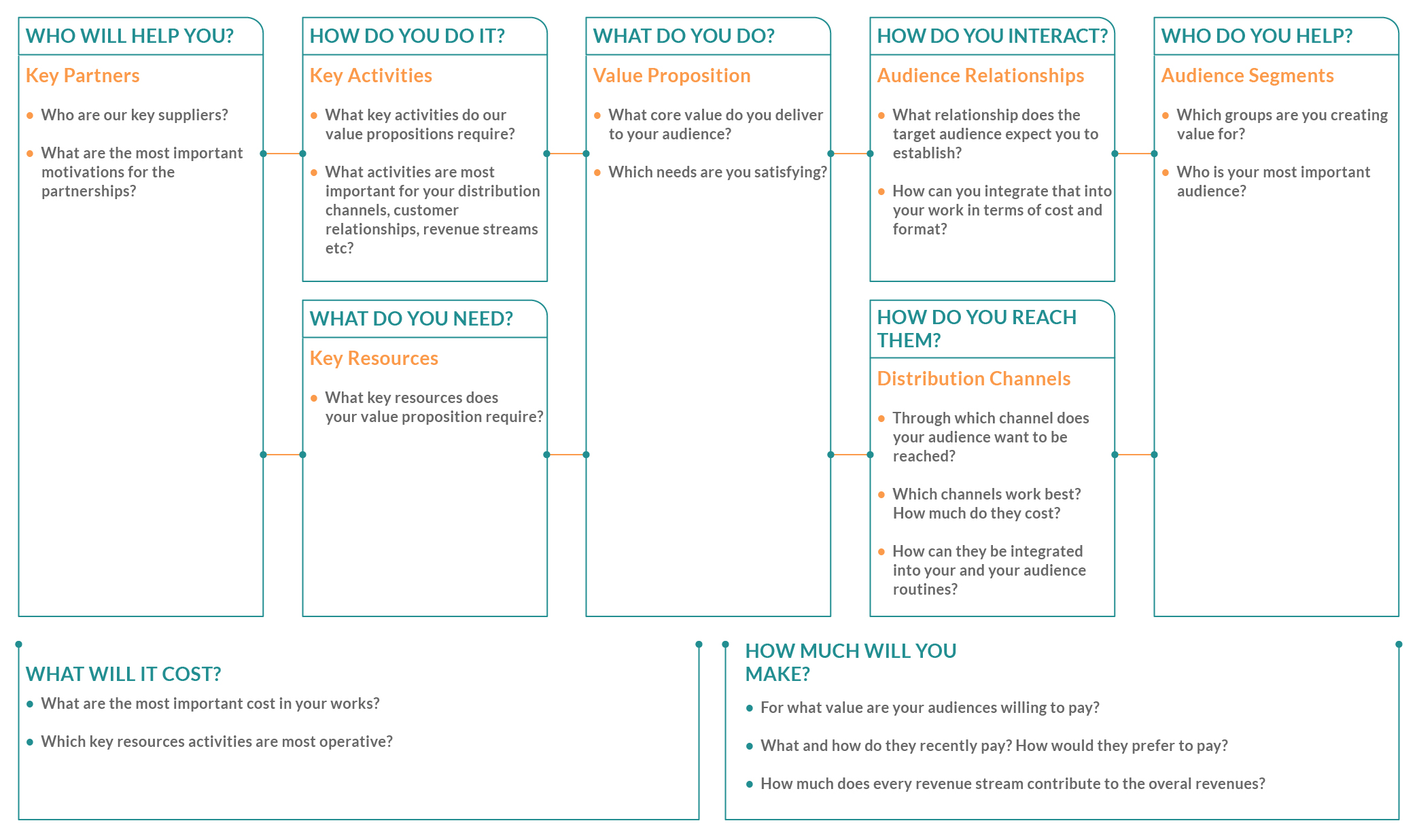The Business Model Canvas (BMC) is a methodology that focuses on the concept of “business model”, which is defined as the description of a business (project) idea and how it will create value for all its stakeholders, answering questions about customers (beneficiaries), operations (technology), and profits (social impact) (Dorf, Byers and Nelson 2019). The BMC helps entrepreneurs (organisations or individuals) to develop, improve, or adapt a business or project idea and put it into action. It provides a framework for obtaining the most amount of value from a new idea while taking an objective look at any potential risks and assumptions it carries (Open University, 2016). The Connecting Nature (2019), a consortium of European NGOs, academic institutions, and businesses working on the promotion of nature-based solutions (Tool C3.04), advocates the use of BMC for developing social ventures as it allows:
- To communicate in a simple way what the business/project idea aims and wants to do and why, who needs to be involved and how it is going to make it happen.
- To plan the basic building blocks required to build a successful long-term sustainable project.
- To identify potential new partners or beneficiaries that may be interested in getting involved in the planning, implementation or ongoing operation of the business idea.
- To explore potential sources of initial financing and/or partners who could assist with financing ongoing costs or contributing to cost reduction.
It is important to highlight that having an idea about doing something that might create economic or social value, that is, being “creative”, is not enough. To innovate in the business or social worlds requires putting ideas into action. Innovation is understood as introducing change into relatively stable systems, it is concerned with the work required to make an idea viable (Insider, 2021). Put simply, “creativity is about coming up with the big idea. Innovation is about executing the idea — converting the idea into a successful business” (Govindarajan, 2010).
 Tool -
Tool -



